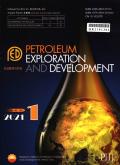Research progresses in geological theory and key exploration areas of coal-formed gas in China
IF 8
Q1 ENERGY & FUELS
引用次数: 0
Abstract
Based on the research progress of the geological theory of coal-formed gas, the contributions of coal-formed gas to the natural gas reserves and production in China and to the development of natural gas in major gas-producing basins are analyzed, and the key favorable exploration zones for coal-formed gas in China are comprehensively evaluated. The following results are obtained. First, coal measures are good gas source rocks, and hydrocarbon generation from coal measure was dominated by gas, followed by oil. Second, a natural gas genetic identification index system based on stable isotopes, light hydrocarbon components, and biomarkers is established. Third, the quantitative and semi-quantitative factors controlling the formation of large gas fields, represented by the indicator of gas generation intensity greater than 20×108 m3/km2, are identified to guide the discovery of large gas fields in China. Fourth, coal-formed gas is the major contributor to the current natural gas reserves and production of China, both accounting for over 55%. The high proportion of coal-formed gas has enabled the Tarim, Sichuan and Ordos basins to be the major gas production areas in China. Fifth, coal rock gas is an important field for future exploration of coal-formed gas, and key zones include the Carboniferous Benxi Formation (Fm) in the Wushenqi-Mizhi area of the Ordos Basin, the Permian Longtan Fm in central-southern Sichuan Basin, the Jurassic Xishanyao Fm in the southern margin and Luliang uplift of the Junggar Basin. Sixth, tight gas is the main area for increasing reserves and production, and the favorable exploration zones include the Carboniferous–Permian in southern Ordos Basin and the Bohai Bay Basin, and the Triassic Xujiahe Fm in the transition zone between central and western Sichuan Basin. Seventh, the Jurassic in the southern margin of the Junggar Basin is a key favorable exploration zone for subsequent investigation of conventional coal-formed gas. These insights have valuable theoretical and practical significance for further developing and improving the theory of coal-formed gas, and guiding the exploration of coal-formed gas fields in China.
中国煤成气地质理论与重点勘探领域研究进展
在煤成气地质理论研究进展的基础上,分析了煤成气对中国天然气储量和产量以及主要产气盆地天然气开发的贡献,并对中国煤成气重点有利勘探带进行了综合评价。得到如下结果:首先,煤系是良好的气源岩,煤系生烃以气为主,油次之。其次,建立了基于稳定同位素、轻烃组分和生物标志物的天然气成因识别指标体系。第三,确定了以产气强度大于20×108 m3/km2为代表的控制大气田形成的定量和半定量因素,以指导中国大气田的发现。四是煤成气是目前中国天然气储量和产量的主要来源,占比均超过55%。塔里木盆地、四川盆地和鄂尔多斯盆地煤成气比例高,是中国主要产气区。五是煤岩气是未来煤成气勘探的重要领域,重点带为鄂尔多斯盆地乌胜旗—米脂地区石炭系本溪组、四川盆地中南部二叠系龙潭组、南缘侏罗系西山窑组和准噶尔盆地吕梁隆起。(6)致密气是储、产的主要区域,有利勘探带包括鄂尔多斯盆地南部和渤海湾盆地石炭系—二叠系和川中—西部过渡带三叠系须家河组。准噶尔盆地南缘侏罗系是后续常规煤成气勘探的重点有利勘探带。这些认识对于进一步发展和完善煤成气理论,指导中国煤成气田勘探具有重要的理论和现实意义。
本文章由计算机程序翻译,如有差异,请以英文原文为准。
求助全文
约1分钟内获得全文
求助全文

 求助内容:
求助内容: 应助结果提醒方式:
应助结果提醒方式:


